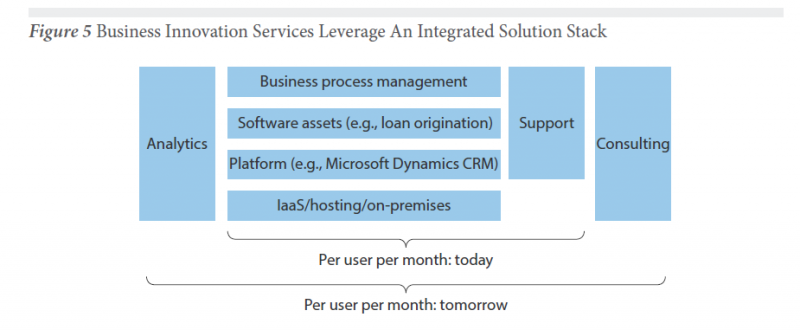A New Service Architecture For Business Innovation
The IT services industry is being challenged on two opposite fronts. At one end, IT organizations need efficient, reliable operations; at the other, business stakeholders increasingly demand new, innovative systems of engagement that enable better customer and partner interactions.
My colleagues Andy Bartels and Craig Le Clair recently published thought provoking reports on an emerging class of software — smart process apps — that enable systems of engagement. In his report, Craig explains that “Smart process apps will package enterprise social platforms, mobility, and dynamic case management (DCM) to serve goals of innovation, collaboration, and workforce productivity.” In other words, smart process apps play a critical role in filling gaping process holes between traditional systems of records and systems of engagement.
While these reports focus on software vendors, I also see service providers like Accenture (with Accenture CAS), IBM (with Emptoris), and Infosys (with Infosys BrandEdge) acquiring and/or developing their own IP-based solutions to help organizations fill the gaps between current and future application requirements. Another interesting player in this space is HP Enterprise Services. I recently wrote about how HP composed a dealer management solution (DMS) leveraging Microsoft Dynamics as a platform on which it developed its own IP. Below I’ve listed a few of the design principles that caught my interest in this particular solution, which I believe will become commonplace among all service providers aiming to deliver business innovation to their clients:
- A scalable, reusable, multitenant architecture enables adaptable business processes. The processes that clients go through to buy a car can also apply to other products and services, such as new credit cards or loan applications. These are all interactions that organizations need to manage efficiently and effectively in order to save time for the customer and either increase their satisfaction level or just reduce their frustration. Systems of engagement enable these interactions and relationships. But relationships change and enabling solutions need to be flexible and adaptable to rapidly embrace these changes. The approach that HP has taken is interesting because it leverages a platform and architecture that it can reuse across clients and repurpose across industries.
 Consulting, BPM, and analytics bring incremental business value to clients. In the DMS offering, HP’s automotive industry specialists work with the client to understand the business challenges and configure a solution aimed at delivering increased business value (higher client satisfaction, for instance). A library of reusable business processes accelerates the deployment of the solution across the different clients and client instances. Finally, analytical tools identify potential improvement areas in terms of business process performance, thus optimizing the solution to deliver the right business outcomes.
Consulting, BPM, and analytics bring incremental business value to clients. In the DMS offering, HP’s automotive industry specialists work with the client to understand the business challenges and configure a solution aimed at delivering increased business value (higher client satisfaction, for instance). A library of reusable business processes accelerates the deployment of the solution across the different clients and client instances. Finally, analytical tools identify potential improvement areas in terms of business process performance, thus optimizing the solution to deliver the right business outcomes.

What does this mean? Service providers will no doubt play a big role as integrators of smart process apps. More importantly, I expect that this new service architecture, combination of assets (including BPM, mobile, social and analytics), strong domain expertise, and as-a-service delivery models will allow traditional service providers like HP ES, Accenture, IBM, and Infosys to reinvent the way they deliver value to their clients and help them create business innovation. I welcome your thoughts, as always!
